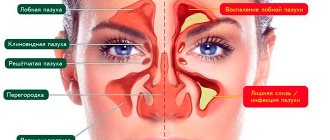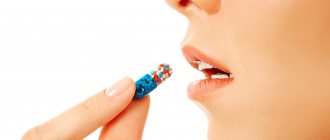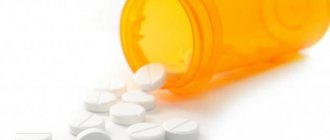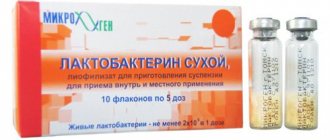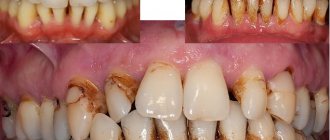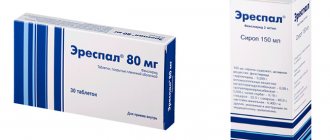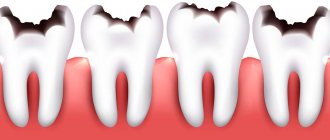general characteristics
Today, there are already a large number of drugs belonging to the vast world of antibiotics - substances of natural or semi-synthetic origin that have the ability to destroy certain groups of pathogenic microorganisms or prevent their growth or reproduction. The mechanisms and spectrums of action of antibiotics may be different. Over time, new types and modifications of antibiotics appear. Such diversity requires systematization. Nowadays, antibiotics are classified according to their mechanism and spectrum of action, as well as their chemical structure. According to their mechanism of action they are divided into:
- bacteriostatic, inhibiting the growth or reproduction of pathogenic microorganisms;
- bactericidal, which help destroy bacteria.
The main mechanisms of action of antibiotics:
- disruption of the bacterial cell wall;
- suppression of protein synthesis in the microbial cell;
- disruption of the permeability of the cytoplasmic membrane;
- inhibition of RNA synthesis.
Beta-lactams - penicillins
Based on their chemical structure, these compounds are divided as follows.
Beta-lactam antibiotics. The mechanism of action of lactam antibiotics is determined by the ability of this functional group to bind enzymes involved in the synthesis of peptidoglycan, the basis of the outer membrane of microorganism cells. Thus, the formation of its cell wall is inhibited, which helps to stop the growth or reproduction of bacteria. Beta-lactams have low toxicity and at the same time good bactericidal effect. They represent the largest group and are divided into subgroups that have similar chemical structures.
Penicillins are a group of substances isolated from a certain colony of mold fungi and acting bactericidal. The mechanism of action of penicillin antibiotics is due to the fact that by destroying the cell wall of microorganisms, they destroy them. Penicillins are of natural and semi-synthetic origin and are broad-spectrum compounds - they can be used in the treatment of many diseases caused by streptococci and staphylococci. In addition, they have the property of selectivity, acting only on microorganisms without affecting the macroorganism. Penicillins have their drawbacks, which include the emergence of bacterial resistance to it. The most common natural ones are benzylpenicillin and phenoxymethylpenicillin, which are used to combat meningococcal and streptococcal infections due to their low toxicity and low cost. However, with long-term use, the body may develop immunity to the drug, which will lead to a decrease in its effectiveness. Semi-synthetic penicillins are usually obtained from natural ones by chemical modification to give them the desired properties - amoxicillin, ampicillin. These drugs are more active against bacteria resistant to biopenicillins.
Are there any benefits to antibiotics?
Despite the fact that taking antibiotics negatively affects the functioning of certain organs and systems of the body, this class of drugs in most cases is beneficial. It destroys harmful bacteria and prevents their reproduction. The indispensability of antibacterial drugs is due to the fact that other medications may not provide the necessary therapeutic effect in the treatment of bacterial infections. Therefore, the benefits and harms of antibiotics for the human body are determined in each case individually.
Indications for use
Diseases that benefit from antibiotics include:
- Pathologies of the nasopharynx of bacterial origin.
- Infectious skin diseases.
- Bronchitis, pneumonia and other respiratory diseases.
- Bacterial infections of the genitourinary system.
- Intestinal and gastric pathologies caused by pathogenic bacteria.
- Prevention of infections in injuries, for the treatment of purulent wounds.
The properties of antibiotics are such that their use is advisable for the treatment of pathologies caused by pathogenic microflora.
Antibacterial drugs are potent in their properties, therefore, in order for the treatment to take place with maximum benefit for the patient, it is necessary to adhere to some recommendations:
- The main rule is not to self-medicate, do not adjust the timing and dosage of medications at your own discretion. Correctly selected dosage is the key to ensuring that medications do not cause adverse reactions and cause minimal harm to organs and tissues.
- Any potent medicine has a list of contraindications. The attending physician must take into account all diseases in the medical history, and the patient must carefully read the instructions for the drug prescribed by the doctor. Phenomena such as individual intolerance to a particular substance or allergic reactions can only be identified during the process of taking the medicine. In this case, you should promptly consult a doctor who will replace the antibiotic with an acceptable option.
- Most of these medications should be taken after meals to reduce the negative impact on stomach acidity and intestinal microflora. For this reason, tablets should be taken with plenty of water.
- Antibacterial agents cannot be combined with the simultaneous intake of alcoholic beverages: at a minimum, this can reduce the effectiveness of treatment, and in the worst case, have a serious negative effect on the body.
- Possible harm from drugs is often stopped by probiotics, i.e. substances with the opposite effect, which are taken only on the recommendation of a specialist.
- It is allowed to take vitamin-mineral complexes that smooth out the harmful effects of antibiotics.
Massive and uncontrolled self-medication is a serious problem in medical practice. The use of medications without a doctor’s prescription and supervision is harmful and dangerous:
- Lack of effect and benefit. This class of medications is aimed at treating diseases of bacterial and infectious origin. If the cause of the disease is other factors, treatment with drugs is not effective, but adverse reactions from their effects on the body persist.
- Decreased immunity and addiction. Harmful bacteria tend to adapt to the action of antibiotics, so in the future the medication may not be beneficial. In addition, it can negatively affect healthy bacterial flora, which may cause decreased immunity.
- It has been proven that excessive use of antibiotics can increase the risk of cancer.
- The percentage of allergic reactions is high.
That is why medications will only be beneficial if recommended by the attending physician.
The effect of antibacterial agents on microorganisms is bactericidal (they kill cells) and bacteriostatic (they stop cells from developing and do not allow them to multiply). This discovery was made in 1928 and saved millions of lives. Treatment of many injuries, anaerobic infection (gangrene), inflammatory diseases of internal organs (pneumonia, bronchitis, colitis, cystitis, adnexitis and others) is impossible without the use of antibiotics. In patients, fever goes away faster, wounds heal, and organ functions are restored without complications.
Other beta-lactams
Cephalosporins are obtained from mushrooms of the same name, and their structure is similar to that of penicillins, which explains the same negative reactions. There are four generations of cephalosporins. First-generation drugs are used more often in the treatment of mild forms of infections caused by staphylococci or streptococci. The second and third generation of cephalosporins are more active against gram-negative bacteria, and the fourth generation substances are the most powerful drugs used to treat severe infections.
Carbapenems are effective against gram-positive, gram-negative and anaerobic bacteria. Their positive property is the absence of bacterial resistance to the drug even after long-term use.
Monobactams also belong to beta-lactams and have a similar mechanism of action of antibiotics, which consists in influencing the cell walls of bacteria. They are used to treat a wide variety of infections.
Macrolides
This is the second group. Macrolides are natural antibiotics with a complex cyclic structure. They are a multi-membered lactone ring with attached carbohydrate residues. The properties of the drug depend on the number of carbon atoms in the ring. There are 14-, 15- and 16-membered compounds. Their spectrum of action on microbes is quite wide. The mechanism of action of antibiotics on a microbial cell is their interaction with ribosomes and thereby disrupting the synthesis of proteins in the microbial cell by suppressing the reactions of addition of new monomers to the peptide chain. Accumulating in the cells of the immune system, macrolides also carry out intracellular destruction of microbes.
Macrolides are the safest and least toxic among known antibiotics and are effective against not only gram-positive, but also gram-negative bacteria. When using them, no unwanted side reactions are observed. These antibiotics are characterized by a bacteriostatic effect, but at high concentrations they can have a bactericidal effect on pneumococci and some other microorganisms. According to the method of production, macrolides are divided into natural and semi-synthetic.
The first drug from the class of natural macrolides was erythromycin, obtained in the middle of the last century and successfully used against gram-positive bacteria resistant to penicillins. A new generation of drugs in this group appeared in the 70s of the 20th century and are still actively used today.
Macrolides also include semisynthetic antibiotics - azolides and ketolides. In the azolide molecule, a nitrogen atom is included in the lactone ring between the ninth and tenth carbon atoms. A representative of azolides is azithromycin, which has a broad spectrum of action and activity against gram-positive and gram-negative bacteria, some anaerobes. It is much more stable in an acidic environment, compared to erythromycin, and can accumulate in it. Azithromycin is used for a variety of diseases of the respiratory tract, genitourinary system, intestines, skin and others.
Ketolides are prepared by adding a keto group to the third atom of the lactone ring. They are distinguished by less addictive bacteria when compared with macrolides.
Rating of modern antibiotics
Antibiotics are obtained by processing waste products of various microorganisms: bacteria, fungi, actinomycetes. But there are also drugs from this category, completely synthetic, which do not have taxes of natural origin.
Unidox Solutab
A strong broad-spectrum antibiotic, Unidox belongs to the group of tetracyclines. The medicine has a positive effect in the fight against most gram-positive and gram-negative bacteria. The medication is available in tablet form and has a bacteriostatic effect - it inhibits protein synthesis in the cells of pathogenic microorganisms.
The medicine fights the following organisms: mycoplasmas, chlamydia, spirotech, staphylococci, meningococci, pneumococci and others. The main component is doxycycline monohydrate, and additional components: magnesium stearate, lactose monohydrate, saccharin, hypromellose, microcellulose.
The drug is indicated for the following ailments:
- sinusitis;
- tonsillitis;
- otitis;
- a cold that is difficult to develop;
- chronic bronchitis;
- pharyngitis;
- urethritis;
- endometritis;
- pyelonephritis;
- chlamydia;
- syphilis;
- gonorrhea;
- cholecystitis;
- plague;
- gastroenterocolitis.
The dosage and course are selected depending on the diagnosis. The standard dose is 100 mg 3 times a day, no more than 14 days.
The drug is not prescribed if:
- sensitivity to the composition is observed;
- kidneys are not working properly;
- have stomach problems;
- a woman is carrying a baby or breastfeeding;
- have liver problems;
- there is an allergy to antibiotics;
- the patient's age is less than 8 years.
Exceeding the dose and course may result in undesirable manifestations: problems with kidney function, diarrhea, allergies, stomatitis, vomiting, nausea, candidiasis, decreased blood pressure, tachycardia.
The cost of the drug in Russian pharmacies varies between 300 rubles.
Pantsef
This is a 3rd generation semi-synthetic antibiotic from the group of cephalosporins. Has a bactericidal effect. The drug inhibits the synthesis of the cell membrane of a pathogenic microorganism. The medicine leads to the death of gram-positive and gram-negative microorganisms.
The drug is available in tablet form and in granules, the active ingredient is cefexime, and the additional components are magnesium stearate, titanium dioxide, gelatin, corn starch, calcium dihydrogen phosphate.
The medicine is prescribed for infectious and inflammatory diseases:
- cervicitis;
- urethritis;
- pneumonia;
- bronchitis;
- tracheitis;
- otitis;
- tonsillitis;
- pharyngitis.
The drug in tablet form should be taken by adults and children from 12 years of age at 8 mg/kg. the maximum daily dose is 400 mg. The duration of therapy is no more than 10 days. For children under 12 years of age, it is better to give the drug in the form of a suspension, it is prepared from granules; the daily dose of the drug should not exceed 400 mg.
The medication should not be prescribed to people who are particularly sensitive to penicillins and cephalosporins. The medicine should be given with caution to children under 6 months of age and the elderly.
Failure to follow the recommendations may provoke the development of undesirable manifestations: anorexia, dry mouth, diarrhea, vomiting, candidiasis, dysbacteriosis, flatulence, nephritis, headache, allergies.
The cost of tablets and granules for preparing a suspension varies between 450 rubles.
Monural
A strong broad-spectrum antibiotic is available in the form of granules for the preparation of an oral solution. The granules are packaged in sachets of 2-3 g. The main component in it is fosfomycin trometamol, as well as additional ones: tangerine and orange flavoring, saccharin and sucrose.
The medicine has antimicrobial activity and has a bactericidal effect. Suppresses the process of bacterial cell wall synthesis. The action of the main component is aimed at destroying and preventing further proliferation of pathogenic microorganisms.
The medicine is prescribed for the treatment of acute bacterial cystitis, urethritis, bacteriuria, and pyelonephritis. Take the medicine 3 g once a day, in difficult cases you can repeat the dose after 24 hours.
You cannot prescribe medicine:
- children under 5 years old;
- severe kidney failure;
- special sensitivity.
Failure to comply with doctor's instructions can lead to the development of the following symptoms: diarrhea, nausea, allergies, heartburn, vomiting.
The price of the drug is 350 rubles.
Klacid
This is a semi-synthetic antibiotic from the macrolide group. The main component of the drug is clarithromycin. This substance has an antibacterial effect and inhibits bacterial protein synthesis. The consistency of the drug is such that after it enters the body.
The active component is released gradually as it passes through the gastrointestinal tract, gradually killing and stopping the growth of pathogenic microorganisms. The medicine is available in the form of tablets and a sweet suspension.
Medicines are prescribed for the following ailments:
- pneumonia;
- bronchitis;
- sinusitis;
- angina;
- pharyngitis;
- folliculitis.
The medicine should be taken twice a day, 250 mg; in severe cases, the dose can be doubled. Duration of therapy is 2 weeks. For children, the drug is given in the form of a suspension - 7.5 mg/1 kg of body weight, divided into doses twice a day.
It is prohibited to prescribe medicine for:
- hypersensitivity;
- porphyria;
- carrying a baby and breastfeeding.
The medicine should not be given to children under 3 years of age. Failure to follow the recommendations can provoke the development of the following symptoms: headache, phlebitis, vomiting, diarrhea, nausea, abdominal discomfort, allergies, insomnia, stomatitis, tachycardia. The cost of the drug varies within 800 rubles.
Zinnat
A strong broad-spectrum antibiotic, Zinnat contains an active component - cefuroxime axetil, which belongs to the group of 2nd generation cephalosporins. The drug is active against a wide range of pathogenic microorganisms.
It has a bactericidal effect associated with the process of suppressing the synthesis of bacterial cell walls. The medicine is available in the form of tablets and granules.
Medicines are prescribed for the treatment of infectious and inflammatory ailments, which include:
- sinusitis;
- pharyngitis;
- bronchitis;
- otitis;
- furunculosis;
- pyelonephritis;
- urethritis;
- cystitis;
- meningitis;
- gonorrhea.
Tablets are taken 125 mg twice a day for 5-10 days. Children from 3 months of age are recommended to take a suspension; the dose is calculated as follows: 10 mg/kg body weight, but not more than 500 mg per day.
The medication should not be taken by children under 3 years of age who are particularly sensitive to the composition. It is prescribed with caution to people with digestive system problems.
Failure to follow the recommendations provokes the development of the following symptoms: anemia, nausea, headache, allergies, diarrhea, vomiting, abdominal discomfort, jaundice. The cost of the medicine varies between 250-500 rubles.
Rovamycin
A strong broad-spectrum antibiotic, Rovamycin, contains the main component - spiramycin. Available in the form of tablets and powder for the preparation of a solution administered intravenously into the body.
It has antibacterial activity, which is aimed at combating streptococci, staphylococci, enterococci. Many other microorganisms and strains are also sensitive to it.
It is recommended to take medicine for the following ailments:
- infectious pathologies of the ENT organs and respiratory system;
- infections of the joints and skeletal system;
- infections of the skin and soft tissues;
- infections of the genitourinary system.
Adults and children are recommended to take the drug 1,500,000 IU up to 6 times a day or 3,000,000 IU up to 3 times. Duration about 7 days. For children, the dosage is reduced by 2 times. The solution is administered slowly intravenously for severe infections twice a day.
The medicine cannot be prescribed if you are sensitive to the composition, lactation, or for children under 3 years of age.
Violation of the doctor's instructions can provoke the development of the following symptoms: vomiting, diarrhea, nausea, hepatitis, colitis, allergies. The cost of the drug in Russian pharmacies varies within 1000 rubles.
Sumamed
The latest generation antibiotic is available in three different forms: tablets, capsules and powder. The main component is azithromycin dihydrate. This drug belongs to the group of macrolides-azalides and has a bacteriostatic effect.
Its mechanism of action is based on the suppression of cell protein synthesis by pathogenic microorganisms. After its exposure, the growth and reproduction of bacteria abruptly stops.
The medicine is indicated for use in infectious and inflammatory diseases:
- sinusitis;
- tonsillitis;
- otitis;
- bronchitis;
- pneumonia;
- acne;
- Lyme disease;
- cystitis;
- pyelonephritis;
- urethritis.
Take the medicine like this:
- tablets 500 mg per day for 3 days;
- the suspension is given to the child in the amount of 10 mg per 1 kg of body weight, taken once a day, course 3 days;
- capsules are taken once a day, 500 mg or 1 g.
You cannot prescribe medicine for:
- special sensitivity to the components of the composition;
- severe disorders of the liver and kidneys.
Capsules and tablets are not prescribed to children under 12 years of age. The suspension is contraindicated in children under 6 months.
Failure to comply with the doctor's instructions can cause the following undesirable manifestations: anemia, rhinitis, pneumonia, candidiasis, pharyngitis, insomnia, headache, drowsiness, dizziness, allergic reaction. The cost of the drug varies between 400-500 rubles.
Azithromycin
This is a semi-synthetic antibiotic, which includes a substance of the same name, belongs to the group of macrolides. The drug is active against many gram-positive and gram-negative microorganisms: chlamydia, mycoplasma, aerobic microflora, mycoparasites, pertussis, campylobacter. The drug is available in the form of tablets, capsules and powder.
Medicines are prescribed for the following ailments:
- tonsillitis;
- pneumonia;
- bronchitis;
- laryngitis;
- otitis;
- cervicitis;
- urethritis;
- dermatitis;
- impetigo;
- scarlet fever;
- borreliosis.
Take the medicine once a day, 500 mg, one hour before meals or 2 hours after. Duration of therapy is up to 3 days. Children are recommended to take the medication in the form of a suspension, which is prepared from powder. The dosage is calculated depending on the child’s body weight.
The medicine should not be prescribed to people with special sensitivity to the components or severe illnesses that have affected the kidneys and liver. Among the undesirable manifestations, the most commonly observed are: vaginal infections, nausea, vomiting, diarrhea, abdominal discomfort, nephritis, candidiasis.
The cost of the drug varies within 200 rubles.
Avelox
This is a 4th generation antibacterial agent belonging to the group of trifluoroquinolones. Contains the main component – moxifloxacin. The medicine has broad antibacterial activity. It is this substance that penetrates directly into the cell and disrupts the replication processes of DNA hydrase, which ultimately provokes the death of bacteria.
The drug also stops the growth of bacteria, so they do not have time to release large amounts of toxins and cause intoxication in the body. The drug is available in the form of tablets and solution for injection.
The medicine is prescribed as therapy for people with infection and inflammation caused by the presence of pathogenic microflora:
- acute and chronic sinusitis;
- damage to soft tissues and skin;
- pneumonia;
- bronchitis;
- intra-abdominal abscesses;
- endometritis;
- inflammatory diseases of the pelvic organs.
Tablets are taken 400 mg once a day. The course is selected individually. The solution is administered intravenously.
You cannot prescribe medicine in the following cases:
- children under 18 years of age;
- allergic reaction;
- carrying a baby and breastfeeding;
- hypokalemia;
- bradycardia;
- serious heart disease;
- arrhythmias;
- lactose intolerance;
- serious illnesses affecting the liver.
Failure to comply with doctor's instructions can provoke the development of the following symptoms:
- nausea;
- diarrhea;
- vomit;
- dizziness;
- headache;
- fungal infections;
- arrhythmia;
- anxiety states;
- depression;
- allergic manifestations.
The medicine can be purchased in Russian pharmacies without a prescription: tablets for 800 rubles, and a solution for 1300 rubles.
Macropen
This is a strong and effective antibiotic belonging to the macrolide group. With its help, it is possible to inhibit the synthesis of proteins in the cells of pathogenic microorganisms, and has a bacteriostatic and bactericidal effect. It is highly effective against gram-positive and gram-negative bacteria. The medicine is available in the form of tablets and suspension for oral administration.
The medicine is prescribed for infections that were caused by the presence of bacteria sensitive to the main component of the drug - midecamycin:
- pneumonia;
- tonsillitis;
- pharyngitis;
- bronchitis;
- infections of the skin and mucous membranes;
- genitourinary system infections;
- enteritis;
- diphtheria;
- whooping cough.
The medicine should not be prescribed to children under 3 years of age, with severe kidney failure or sensitivity to the main component.
Take the medicine 400 mg 3 times a day, but not more than 1600 mg. The course is individual. Children weighing less than 30 kg are prescribed the drug in the form of a suspension of 20-40 mg per 1 kg of body weight, divided into 3 doses.
Exceeding the dose or non-compliance with the course can provoke the development of the following symptoms: allergic reaction, vomiting, nausea, diarrhea, loss of appetite, jaundice, colitis, bronchospasms, weakness.
The price of the drug varies between 300-400 rubles.
Strong antibiotics with a wide spectrum of action help to effectively get rid of diseases caused by the presence of pathogenic microorganisms. But it is worth remembering that most drugs have contraindications and side effects, so it should be selected by a specialist.
Tetracyclines
Tetracyclines belong to the class of polyketides. These are broad-spectrum antibiotics with a bacteriostatic effect. Their first representative, chlortetracycline, was isolated in the middle of the last century from one of the cultures of actinomycetes, they are also called radiant fungi. A few years later, oxytetracycline was obtained from a colony of the same fungi. The third representative of this group is tetracycline, which was first created by chemical modification of its chlorine derivative, and a year later also isolated from actinomycetes. All other drugs of the tetracycline group are semi-synthetic derivatives of these compounds.
All these substances are similar in chemical structure and properties, in activity against many forms of gram-positive and gram-negative bacteria, some viruses and protozoa. They are also resistant to the habituation of microorganisms. The mechanism of action of antibiotics on a bacterial cell is to suppress the processes of protein biosynthesis in it. When drug molecules act on gram-negative bacteria, they pass into the cell by simple diffusion. The mechanism of penetration of antibiotic particles into gram-positive bacteria has not yet been sufficiently studied, however, there is an assumption that tetracycline molecules interact with ions of certain metals that are found in bacterial cells to form complex compounds. In this case, the chain is broken during the formation of the protein necessary for the bacterial cell. Experiments have proven that bacteriostatic concentrations of chlortetracycline are sufficient to suppress protein synthesis, but large concentrations of the drug are required to inhibit the synthesis of nucleic acids.
Tetracyclines are used in the fight against kidney disease, various infections of the skin, respiratory tract and many other diseases. If necessary, they replace penicillin, but in recent years the use of tetracyclines has decreased markedly, which is associated with the emergence of resistance of microorganisms to this group of antibiotics. The use of this antibiotic as an additive to animal feed also played a negative role, which led to a decrease in the medicinal properties of the drug due to the emergence of resistance to it. To overcome it, combinations with different drugs that have a different mechanism of antimicrobial action of antibiotics are prescribed. For example, the therapeutic effect is enhanced by the simultaneous use of tetracycline and streptomycin.
When is it recommended to use antibiotics?
First of all, you should understand that really serious illnesses must be treated exclusively in a hospital setting.
Therefore, if your condition worsens, then call a doctor at home and let him decide what to do with you. In such situations, trying to do it on your own can lead to very sad consequences. As practice shows, people often do not rush to see a doctor when they feel unwell, but only he can tell whether they should take an antibiotic or not. The problem is that it is possible to find out for sure whether a virus or bacteria is to blame for the disease only after receiving the test results.
If access to medical care is limited, then the patient himself is able to determine the nature of his illness. So, in particular, ARVI usually manifests itself very quickly - the temperature rises sharply to +38 °C and above. When it comes to bacteria, the indicator is usually below this mark. The acute period for a viral infection lasts no more than 5 days, after which the condition begins to improve. The presence of such a picture gives reason to refuse to take antibiotics.
Bacterial diseases progress slowly. The temperature often rises and falls, and in general the person feels quite tolerable. If the symptoms are not too burdensome, then antibiotics should be preferred to lighter drugs and vitamins.
And one more thing - the presence of fever is not a reason to take the medications in question. They are not able to quickly eliminate hyperthermia - there are special antipyretic drugs for this.
Aminoglycosides
Aminoglycosides are natural and semi-synthetic antibiotics with an extremely broad spectrum of action, containing aminosaccharide residues in the molecule. The first aminoglycoside was streptomycin, isolated from a colony of radiant fungi already in the middle of the last century and was actively used in the treatment of many infections. Being bactericidal, antibiotics of this group are effective even with severely reduced immunity. The mechanism of action of antibiotics on a microbial cell is the formation of strong covalent bonds with the ribosomal proteins of the microorganism and the destruction of protein synthesis reactions in the bacterial cell. The mechanism of the bactericidal effect of aminoglycosides has not been fully studied, in contrast to the bacteriostatic effect of tetracyclines and macrolides, which also disrupt protein synthesis in bacterial cells. However, it is known that aminoglycosides are active only under aerobic conditions, so they exhibit low effectiveness in tissues with poor blood supply.
After the appearance of the first antibiotics - penicillin and streptomycin, they began to be used so widely in the treatment of any diseases that very soon the problem of microorganisms becoming accustomed to these drugs arose. Currently, streptomycin is used mainly in combination with other drugs of the latest generation to treat tuberculosis or such rare infections as plague. In other cases, kanamycin is prescribed, which is also a first-generation aminoglycoside antibiotic. However, due to the high toxicity of kanamycin, preference is now given to gentamicin, a second-generation drug, and the third-generation drug of aminoglycosides is amikacin, which is rarely used to prevent microorganisms from becoming accustomed to it.
How to take antibiotics
If you decide to take an antibiotic yourself, follow these rules:
- Read the instructions carefully and decide on the dose. If a range is indicated (from ... to ...) - take the average value;
- The course of treatment is at least five days (if no side effects occur, for example, an allergic rash). Maximum – two weeks;
- You should take the antibiotic after meals (unless otherwise noted in the instructions);
- Take medications with water only;
- Follow a diet (more details below);
- If you develop a rash or other obvious side effects, stop treatment and consult a doctor immediately.
Levomycetin
Levomycetin, or chloramphenicol, is a natural antibiotic with a wide spectrum of action, active against a significant number of gram-positive and gram-negative microorganisms, many large viruses. According to its chemical structure, this derivative of nitrophenylalkylamines was first obtained from the culture of actinomycetes in the mid-20th century, and two years later it was also synthesized chemically.
Levomycetin has a bacteriostatic effect on microorganisms. The mechanism of action of antibiotics on a bacterial cell is to suppress the activity of catalysts for the formation of peptide bonds in ribosomes during protein synthesis. Resistance to chloramphenicol in bacteria develops very slowly. The drug is used for typhoid fever or dysentery.
Antibiotics, what kind of medicine are they?
Antibiotics are a group of drugs that inhibit the growth of living bacteria or completely destroy them. Thus, this is the only group of drugs that penetrate the human body, but interact not with it, but with the microorganisms that are in it. All other drugs have their effects on various cells of the human body itself and change their functioning. This is the unique effect of antibiotics.
Antibiotics only have an effect on bacteria, so viral infections cannot be treated with antibacterial drugs. The first antibacterial drugs were obtained naturally in laboratory conditions. However, most groups of antibiotics are synthetic, that is, they are obtained artificially.
Glycopeptides and lipopeptides
Glycopeptides are cyclic peptide compounds that are natural or semi-synthetic antibiotics with a narrow spectrum of action on certain strains of microorganisms. They have a bactericidal effect on gram-positive bacteria and can also replace penicillin when resistance to it occurs. The mechanism of action of antibiotics on microorganisms can be explained by the formation of bonds with amino acids of the peptidoglycan of the cell wall and, thus, suppression of their synthesis.
The first glycopeptide, vancomycin, was obtained from actinomycetes collected from soil in India. It is a natural antibiotic that actively acts on microorganisms even during the reproduction period. Initially, vancomycin was used as a replacement for penicillin in cases of allergy to it in the treatment of infections. However, increasing resistance to the drug has become a serious problem. In the 80s, teicoplanin, an antibiotic from the group of glycopeptides, was obtained. It is prescribed for the same infections, and in combination with gentamicin it gives good results.
At the end of the 20th century, a new group of antibiotics appeared - lipopeptides isolated from streptomycetes. According to their chemical structure, they are cyclic lipopeptides. These are antibiotics with a narrow spectrum of action that exhibit a bactericidal effect against gram-positive bacteria, as well as staphylococci resistant to beta-lactam drugs and glycopeptides.
The mechanism of action of antibiotics is significantly different from those already known - the lipopeptide forms, in the presence of calcium ions, strong bonds with the bacterial cell membrane, which lead to its depolarization and disruption of protein synthesis, as a result of which the harmful cell dies. The first representative of the class of lipopeptides is daptomycin.
With regard to daptomycin, one can note a significant rate of bactericidal activity, and most importantly, the absence of cross-resistance, or at least its very slow formation, due to the fact that a completely new mechanism of action of antibiotics is embedded in the structure of this substance.
Application
Antibiotics are used to prevent and treat inflammatory processes caused by bacterial microflora. Based on their effect on bacterial organisms, a distinction is made between bactericidal (killing bacteria, for example, by destroying their outer membrane) and bacteriostatic (inhibiting the proliferation of microorganisms) antibiotics.
Other Applications
Some antibiotics also have additional valuable properties that are not related to their antibacterial activity, but related to their effect on the macroorganism.
- Doxycycline and minocycline, in addition to their main antibacterial properties, have an anti-inflammatory effect in rheumatoid arthritis and are inhibitors of matrix metalloproteinases.
- The immunomodulatory (immunosuppressive or immunostimulating) effect of some other antibiotics has been described.
- Antitumor antibiotics are known.
Antibiotics: original and generics
In 2000, a review was published[15], which provides data from a comparative analysis of the quality of the original antibacterial drug and 40 of its generics from 13 different countries. In 28 generics, the amount of active substance released upon dissolution was significantly lower than that of the original, although all of them had the appropriate specification. Twenty-four of the 40 drugs exceeded the recommended 3% contaminant limit and the threshold (>0.8%) for 6,11-di-O-methyl-erythromycin A, a compound responsible for adverse reactions.
A study of the pharmaceutical properties of generic azithromycin, the most popular in Russia, also showed that the total amount of impurities in copies is 3.1-5.2 times higher than that in the original drug "Sumamed" (manufactured by Teva Pharmaceutical Industries), including unknown impurities - 2-3.4 times.
It is important that changing the pharmaceutical properties of a generic drug reduces its bioavailability and, therefore, ultimately leads to a change in specific antibacterial activity, a decrease in tissue concentration and a weakening of the therapeutic effect. Thus, in the case of azithromycin, one of the copies at an acidic value (1.2) in the solubility test, simulating the peak of gastric juice, dissolved only 1/3, and the other one dissolved too early, at the 10th minute, which would not allow the drug completely absorbed in the intestine. And one of the generics of azithromycin lost its ability to dissolve at a pH value of 4.5 [16].
Polyenes
The next group is polyene antibiotics. Today there is a huge surge in fungal diseases that are difficult to treat. To combat them, antifungal substances are intended - natural or semi-synthetic polyene antibiotics. The first antifungal drug back in the middle of the last century was nystatin, which was isolated from a culture of streptomycetes. During this period, many polyene antibiotics obtained from various fungal cultures - griseofulvin, levorin and others - were included in medical practice. Now the fourth generation polyenes are in use. They received their common name due to the presence of several double bonds in the molecules.
The mechanism of action of polyene antibiotics is due to the formation of chemical bonds with sterols of cell membranes in the fungus. The polyene molecule is thus inserted into the cell membrane and forms an ion conductive channel through which the components of the cell pass out, leading to its elimination. In small doses, polyenes have a fungistatic effect, and in high doses they have a fungicidal effect. However, their activity does not apply to bacteria and viruses.
Polymyxins are natural antibiotics produced by soil spore-forming bacteria. They found application in therapy back in the 40s of the last century. These drugs are distinguished by their bactericidal effect, which is caused by damage to the cytoplasmic membrane of the microorganism cell, causing its death. Polymyxins are effective against gram-negative bacteria and rarely cause habituation of microorganisms. However, too high toxicity limits their use in therapy. Compounds of this group - polymyxin B sulfate and polymyxin M sulfate are rarely used and only as reserve drugs.
Antitumor antibiotics
Actinomycins are produced by some radiant fungi and have a cytostatic effect. Natural actinomycins are chromopeptides in structure, differing in amino acids in the peptide chains that determine their biological activity. Actinomycins attract close attention of specialists as antitumor antibiotics. Their mechanism of action is due to the formation of fairly stable bonds between the peptide chains of the drug and the double helix of the microorganism's DNA and, as a result, blocking of RNA synthesis.
Dactinomycin, obtained in the 60s of the 20th century, became the first antitumor drug to be used in oncological therapy. However, due to the large number of side effects, this drug is rarely used. More active antitumor drugs have now been obtained.
Anthracyclines are extremely powerful antitumor substances isolated from streptomycetes. The mechanism of action of antibiotics is associated with the formation of ternary complexes with DNA chains and the breaking of these chains. A second mechanism of antimicrobial action is also possible, due to the production of free radicals that oxidize cancer cells.
Natural anthracyclines include daunorubicin and doxorubicin. Classification of antibiotics according to the mechanism of action on bacteria classifies them as bactericidal. However, their high toxicity forced the search for new compounds that were obtained synthetically. Many of them are successfully used in oncology.
Antibiotics have long been part of medical practice and human life. Thanks to them, many diseases that for many centuries were considered incurable were defeated. Currently, there is such a variety of these compounds that it is necessary not only to classify antibiotics according to their mechanism and spectrum of action, but also according to many other characteristics.
How many days can an adult take antibiotics?
The last time I was very cold, my temperature rose, my body felt weak, my throat hurt. The doctor diagnosed a bacterial sore throat and prescribed antibiotics.
Antibiotics are effective against diseases, but have limitations in their use. They are taken strictly according to the conclusion of a specialist who will prescribe the duration of treatment.
Duration of admission
The action of antibiotics is aimed at suppressing the growth of bacteria. If you self-medicate when signs of a cold appear, you may experience complications with the functioning of the liver, digestive system and other organs in the future.
As prescribed by the doctor, the drugs are taken in courses of 7 to 10 days. Strong medications are taken for 3-5 days. There are schemes in which the drugs are taken for 3 days, after which a break is taken for the next 3 days.
The dosage of such drugs is from 1 to 4 times a day. Repeated use is possible after 1-2 months.
When using bactericidal drugs, the following rules are observed:
- taken before, during or after meals as prescribed by a doctor;
- information about the use of specific medications is strictly recorded, which will eliminate allergic reactions and side effects;
- compliance with the frequency of administration (every 8 or 12 hours);
- Do not take the medicine with tea, coffee, juices or other drinks; you need to use clean water without gas;
- To restore intestinal microflora, it is recommended to take probiotics;
- Avoid drinking alcohol during the recovery period;
- Do not include foods with preservatives and fatty foods in your diet.
Under medical supervision, taking antibiotics is highly effective. To avoid health problems, it is recommended to follow the treatment regimen.

